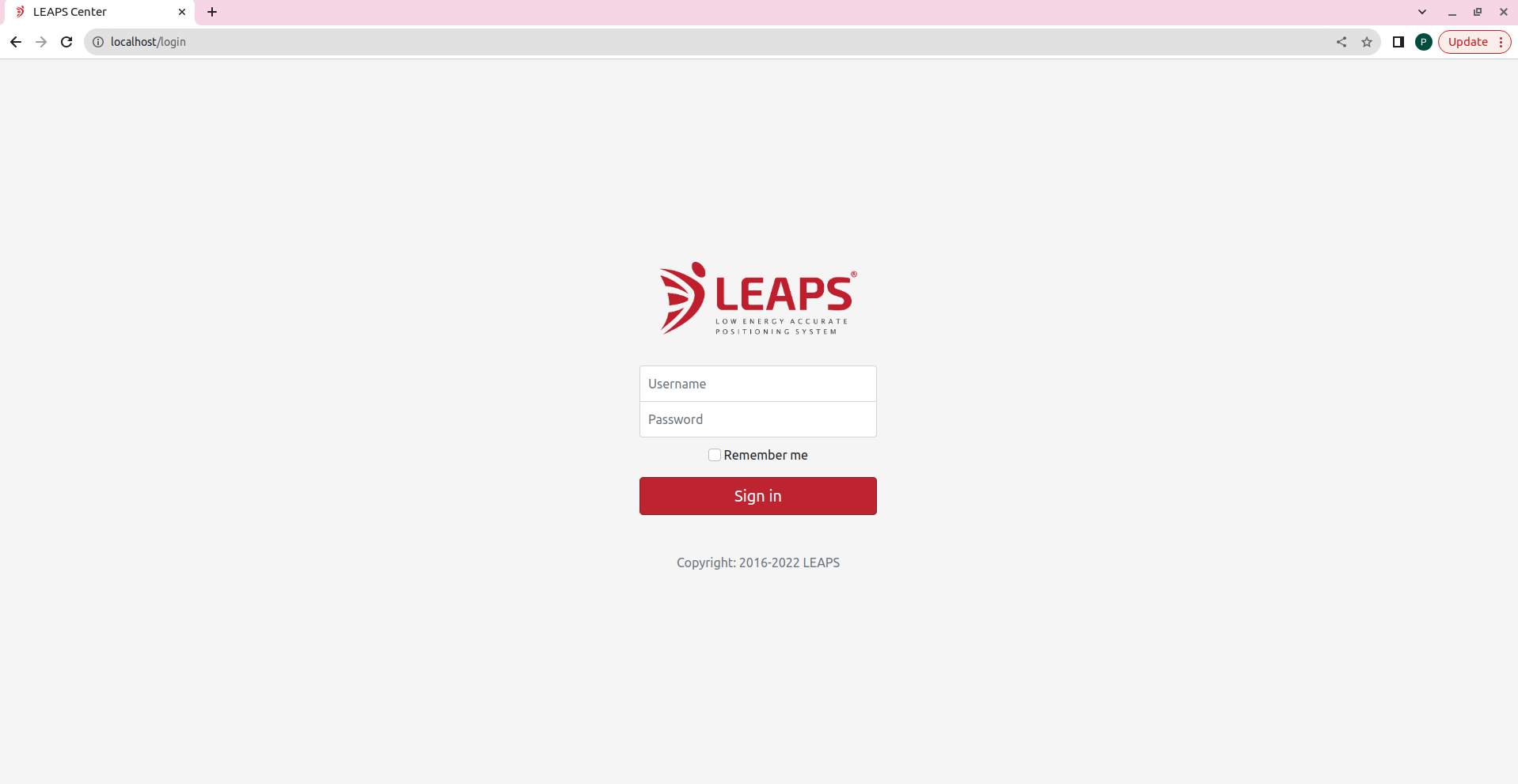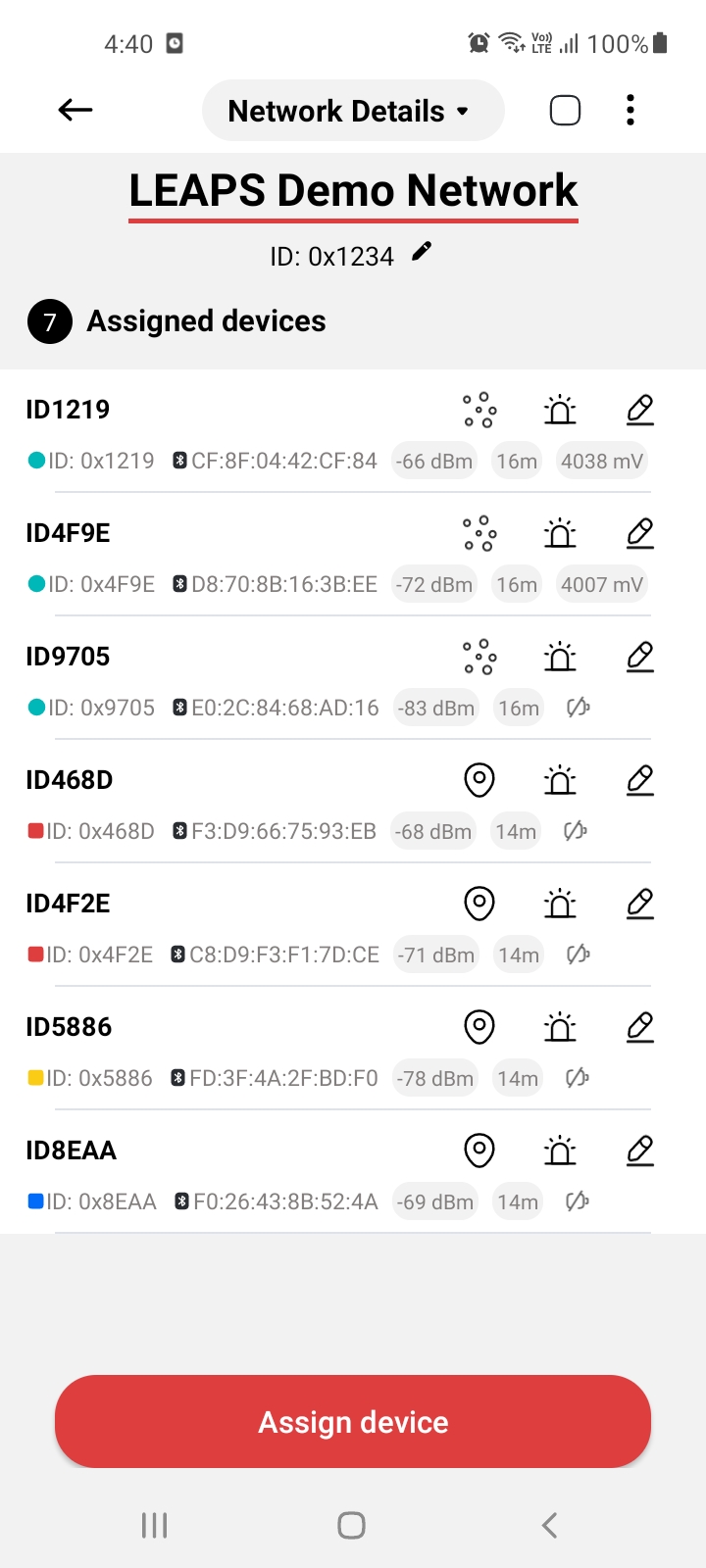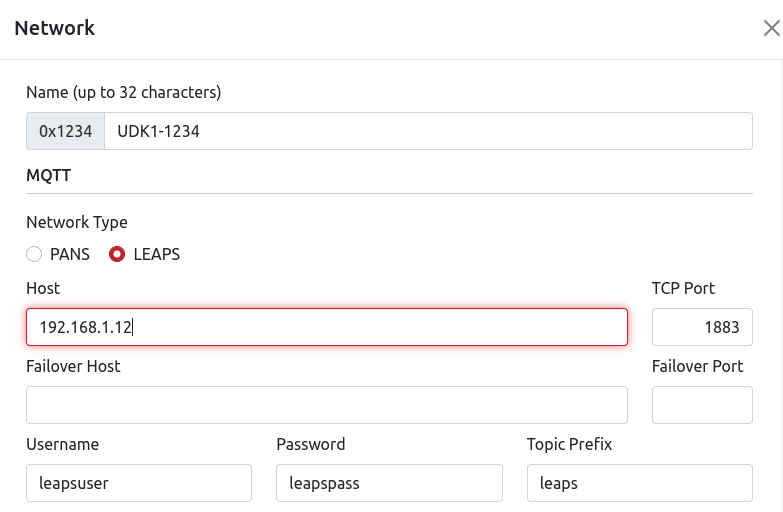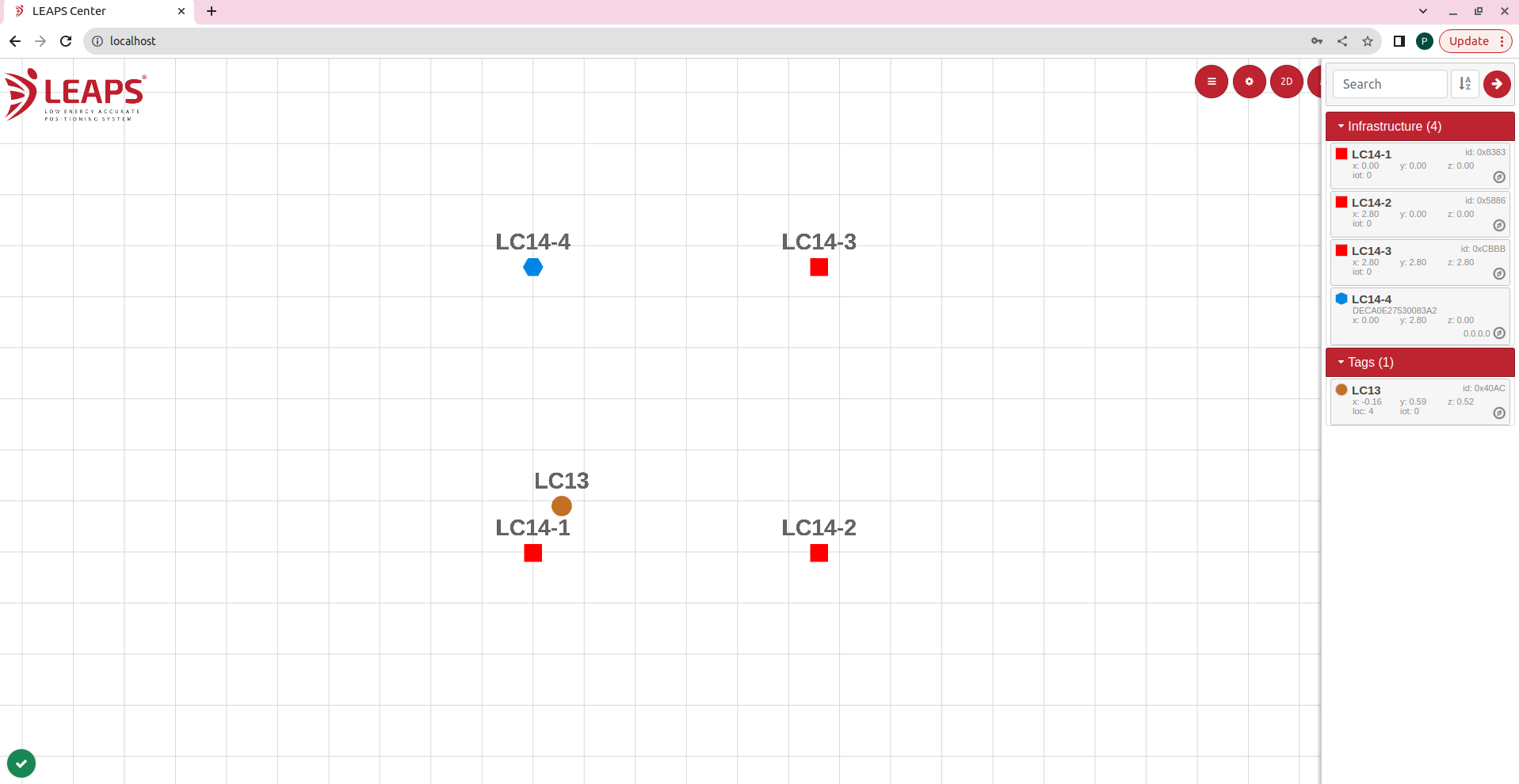LEAPS Docker
This page provides:
The LEAPS Docker package.
Information about system requirements.
Instructions on how to install LEAPS Docker.
The installation is fast and easy and only needs to be done once.
Visit the official Docker to learn more about Docker.
System requirements
System requirements follow Docker Desktop on Linux or Docker Desktop on Windows.
A desktop device: Requires 2 GB of free memory.
On windows, the installation of WSL consumes 2GB of RAM permanently. It is assigned to the Ubuntu WSL.
Recommended: A set of UDK (At least five devices) to verify.
Recommended: Batteries or USB-C cables for powering the devices.
Recommended: LEAPS Manager to configure devices.
Setup instructions
The system is compatible with AMD64, ARM64, and ARM32 architectures.
Download LEAPS Docker
LEAPS Docker
LEAPS-DOCKER-LINUX-v1.1.0.zip.
Extract the LEAPS Docker Archive
Type in a terminal: $ unzip LEAPS-DOCKER-LINUX-v1.1.0.zip -d /path/to/directory
Install Docker on the operating system.
Run the leaps_docker_install.sh script to install Docker on the operating system. For example, on Ubuntu (Linux):
source leaps_docker_install.shAfter the installation, and reboot the OS to ensure Docker is properly configured.
For detailed instructions, you can refer to the official Docker documentation.
Update the correct configuration with IP Address.
Use the update_configuration_ip.sh script to update the system’s configuration with the PC’s IP address. For example, on Ubuntu (Linux):
source update_configuration_ip.sh
Run all LEAPS Docker containers.
Execute the leaps_docker_run_all.sh script, which will pull and run the required Docker containers for LEAPS Center, LEAPS Server, LEAPS Gateway, and Mosquitto (MQTT broker). For example, on Ubuntu (Linux):
source leaps_docker_run_all.shExecute the docker ps command, make sure all containers start successfully and are ready for use. For example, on Ubuntu (Linux):
docker ps CONTAINER ID IMAGE COMMAND CREATED STATUS PORTS NAMES 6f2ae0c87d65 leapslabs/leaps_mosquitto:udk "/docker-entrypoint.…" 9 seconds ago Up 9 seconds 0.0.0.0:1883->1883/tcp, 0.0.0.0:15675->15675/tcp leaps_mosquitto 3d84cad7a913 leapslabs/leaps_server:udk "/app/leaps-server -…" 10 seconds ago Up 9 seconds 0.0.0.0:7777->7777/tcp, 0.0.0.0:7777->7777/udp leaps_server 633c97e96f6e leapslabs/leaps_center:udk "sh -c 'cd /app && …" 10 seconds ago Up 10 seconds 80/tcp, 0.0.0.0:80->8080/tcp leaps_centersudo docker ps CONTAINER ID IMAGE COMMAND CREATED STATUS PORTS NAMES 6bb3bf42cb63 leapslabs/leaps_gateway:udk "/app/leaps-gateway …" About a minute ago Up About a minute leaps_gateway
Connect the gateway board to the PC use a USB-C Data Cable.
Plug the USB-C Data Cable into the USB-C Data Port 1 on the PC. Ensure a stable connection.
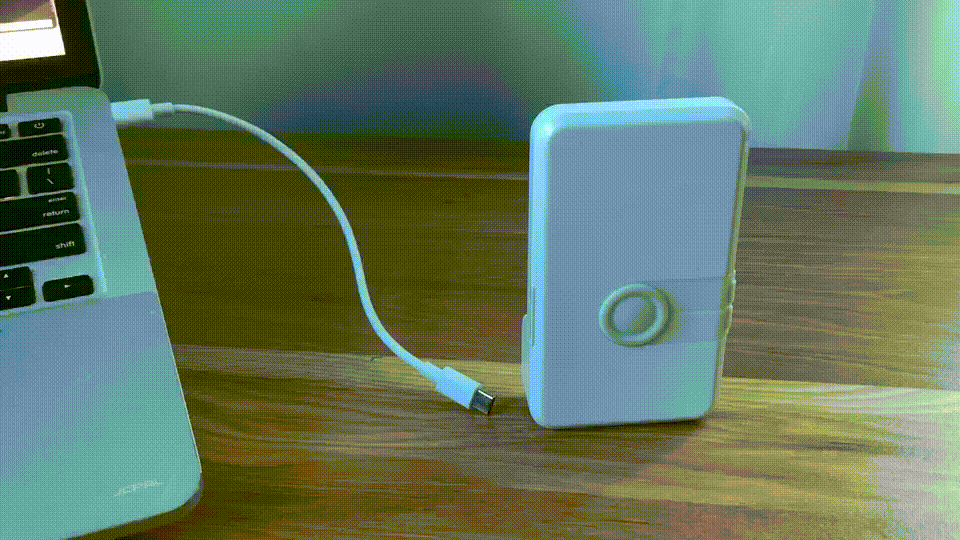
Mosquitto and check messages (optional)
Use mosquitto_sub on the system. To check for messages, use the following command in the terminal.
mosquitto_sub -p 1883 -d -v -t '#'This command will connect to the Mosquitto MQTT broker and display all messages received.
Access the LEAPS Center via IP address.
Use the computer’s web browser.
Enter the IP address or localhost to access the LEAPS Center.
Login the LEAPS Center.
Logging in with Username as admin and Password as admin.
Use LEAPS Manager to prepare network.
Configure demo: TWR RTLS and Data Telemetry Demo or Uplink TDoA RTLS Demo.
By default, the network ID will be
0x1234.For this example, it is necessary to connect the gateway board with ID
0x83A2.
Configure the network on the LEAPS Center.
Check the network settings in LEAPS Center to match the network ID of the gateway board you have connected.
Check the correct host configured as the PC’s IP address.
For this example, the network ID is
0x1234and host is192.168.1.12.Please refer to the LEAPS Center and LEAPS Manager for more details on how to use the application to configure and visualize the nodes and network.
Now the system has been successfully set up and configured the system. Enjoy using it!
Download LEAPS Docker.
LEAPS Docker
LEAPS-DOCKER-WINDOWS-v1.1.0.zip.
Extract the LEAPS Docker Archive.
Use a program like WinZip or 7-Zip to extract the downloaded LEAPS Docker zip file.
Install Docker Desktop on Windows.
Follow the instructions provided in the Docker documentation for Docker Windows Installation.
Once the installation is complete, restart the Windows system to ensure all changes take effect.
Update the correct configuration with IP Address using PowerShell.
Use the update_configuration_ip.bat script to update the system’s configuration with the PC’s IP address.
./update_configuration_ip.batFor this example, the leaps-server configuration is updated with the current IP address:
192.168.1.12.
Run all LEAPS Docker containers using PowerShell.
Execute the leaps_docker_run_all.bat script, which will pull and run the required Docker containers for LEAPS Center, LEAPS Server, and Mosquitto (MQTT broker).
./leaps_docker_run_all.batMake sure all containers start successfully and are ready for use.
CONTAINER ID IMAGE COMMAND CREATED STATUS PORTS NAMES 6f2ae0c87d65 leapslabs/leaps_mosquitto:udk "/docker-entrypoint.…" 9 seconds ago Up 9 seconds 0.0.0.0:1883->1883/tcp, 0.0.0.0:15675->15675/tcp leaps_mosquitto 3d84cad7a913 leapslabs/leaps_server:udk "/app/leaps-server -…" 11 seconds ago Up 11 seconds 0.0.0.0:7777->7777/tcp, 0.0.0.0:7777->7777/udp leaps_server 633c97e96f6e leapslabs/leaps_center:udk "sh -c 'cd /app && …" 12 seconds ago Up 12 seconds 80/tcp, 0.0.0.0:80->8080/tcp leaps_center
Connect the LEAPS Gateway use
LinuxorRaspberry Pi.
Make sure there is a connection to Windows.
Refer to LEAPS Gateway setup on
LinuxorRaspberry Piand, update the IP address accordingly. For example,leaps-server-hostwill be updated to192.168.1.12.
Mosquitto and check messages (optional)
Use mosquitto_sub on the system. To check for messages, use the following command in the terminal.
mosquitto_sub -p 1883 -d -v -t '#'This command will connect to the Mosquitto MQTT broker and display all messages received.
Access the LEAPS Center via IP address.
Use the computer’s web browser.
Enter the IP address or localhost to access the LEAPS Center.
Login the LEAPS Center.
Logging in with Username as admin and Password as admin.
Use LEAPS Manager to prepare network.
Configure demo: TWR RTLS and Data Telemetry Demo or Uplink TDoA RTLS Demo.
By default, the network ID will be
0x1234.
Configure the network on the LEAPS Center.
Check the network settings in LEAPS Center to match the network ID of the gateway board you have connected.
Check the correct host configured as the PC’s IP address.
For this example, the network ID is
0x1234and host is192.168.1.12.
Please refer to the LEAPS Center and LEAPS Manager for more details on how to use the application to configure and visualize the nodes and network.
Now the system has been successfully set up and configured the system. Enjoy using it!
